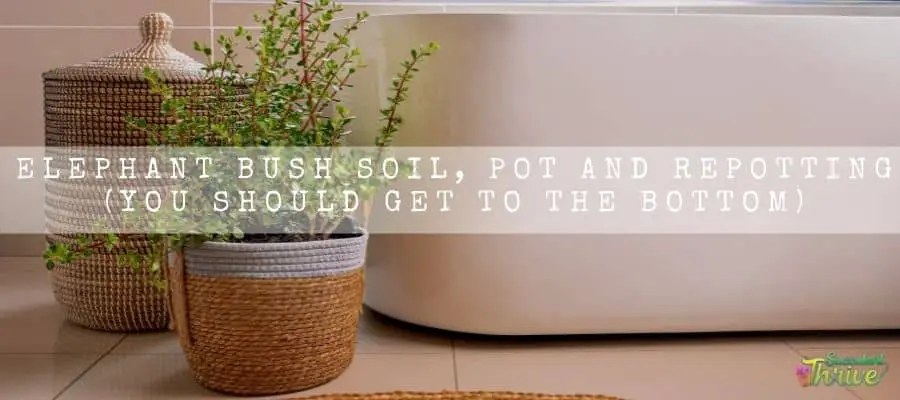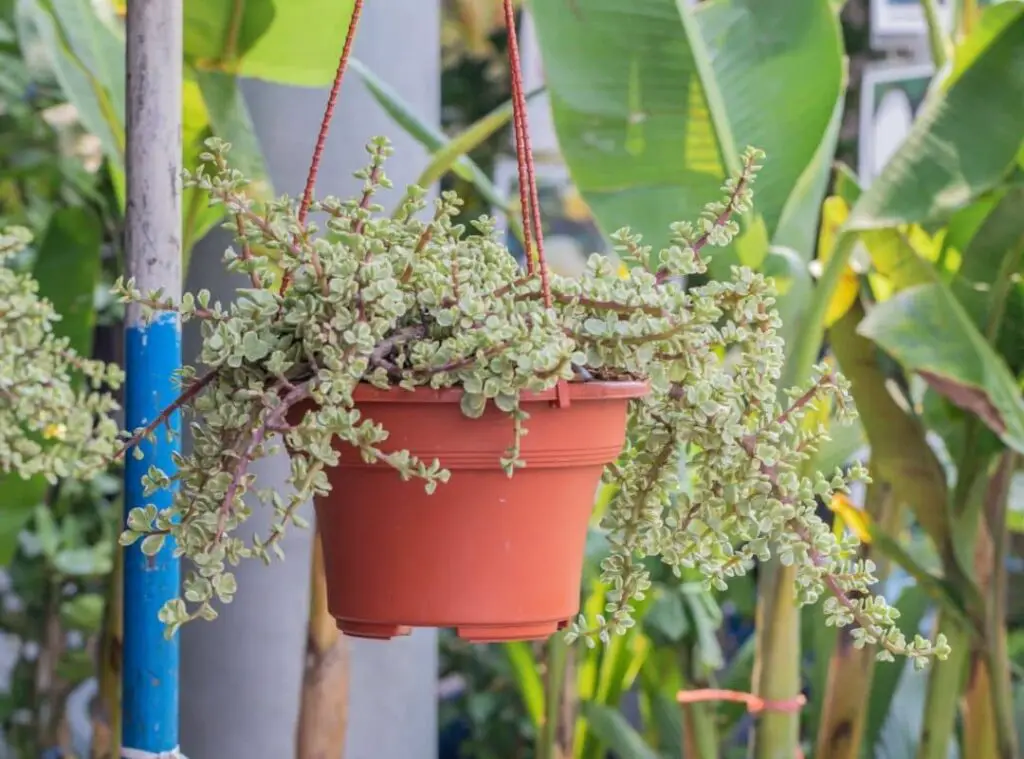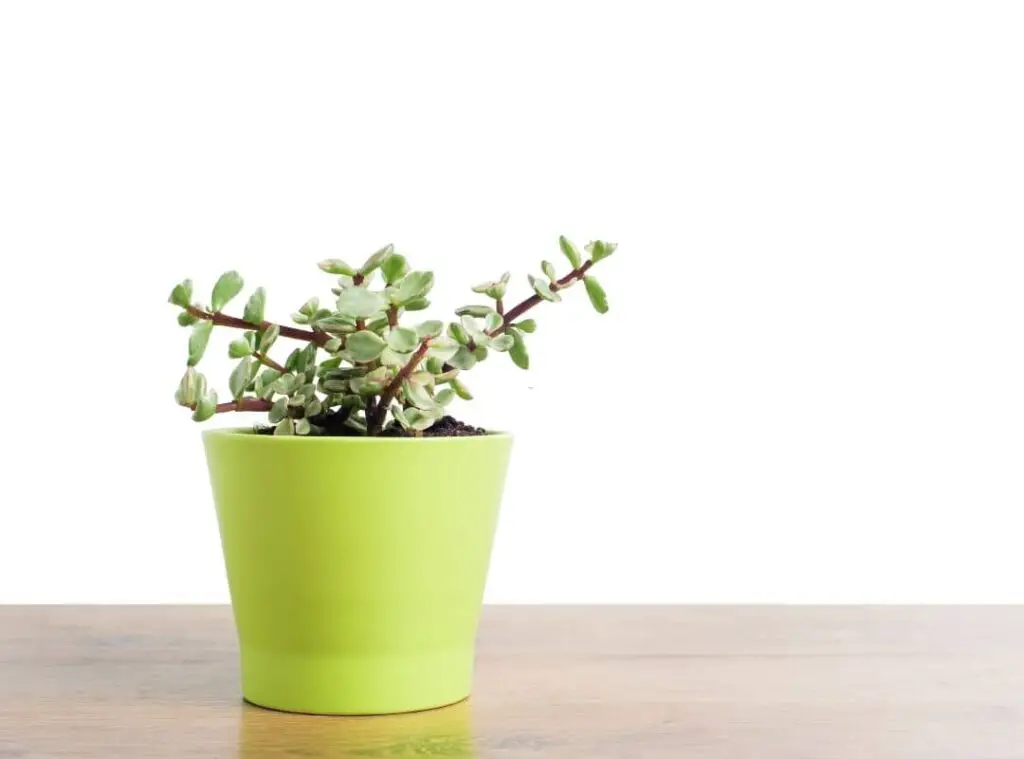Elephant bush plants are endemic to South Africa and they are used to grow in drought weather conditions. Therefore Elephant bush soil requirement is quite unique.
They are great picks for forgetful gardeners as they require only an easy maintenance from you. However before planting you should concentrate on their soil and pot condition.

Best soil for Elephant bush
An excellent drainage in the soil mix is a critical factor when choosing the right soil mix. Ideally, a succulent soil mix or a cactus soil mix would be more appropriate for these plants.
Unless you could create a soil mix on your own.
To make it, you should blend two parts of potting medium, one part of sand and one part of gritty substances. You may use elements such as perlite, pumice, pebbles, bark chips for this purpose.
How to choose a pot for Elephant bush
Succulents need a well drainage be it the soil mix they grow in or the pot they grow in, and Elephant bush are the same.
Hence, an unglazed pot would be ideal as it will ensure that the excess moisture is evaporating faster. Apart from that, make sure that your pot has at least one draining hole.
Elephant bush plants are quite responsive towards over watering. As such, do not grow them in larger pots as then it will retain excess moisture. When you grow them in a larger pot , there will be excess soil as well.
Consequently, it will retain excess moisture levels too. Ultimately it will result in a root rot. What I would recommend is to grow them in a shallow pot.

Guide to plant Elephant bush
They prefer to grow in USDA hardiness zones 9-12 and if you live in these zones, you may grow them outdoors.
They can withstand a temperature level of 100 degrees Fahrenheit during summer. However extreme temperature levels could make them scorched.
You should plant them in a spot which will allow the plants to gain 5-6 hours of bright indirect sunlight be it indoors or outdoors you grow them.
If you find it difficult to expose them to sufficient sunlight levels, you could consider growing them closer to grow lights.
No matter what, they are fonder of growing under bright filtered sunlight. Do not leave them exposed to direct sunlight at any given time as it could lead to discolorations in the plants.
Apart from that, grow them in a fast draining soil mix too. Make sure you grow them in a pot which fulfills the aforesaid features too.
Do Elephant bushes need repotting?
Elephant bush plants are undemanding in terms of repotting them. Literally you could do it only if you spot their roots coming out from the draining holes only.
In addition to that, if you have freshly purchased them from a nursery, you need to consider repotting them too. Following is a complete guide on how to conduct the repotting of the Elephant bush plants.
How do you report a Elephant bush?
First and foremost, you need to wait until spring or summer seasons arrive so that there will be warmer temperature levels and longer day times.
However, if you live in more temperate climates, consider repotting them in late winter to early fall. Do not ever transplant them when they are dormant as they will be in their relaxing period.
Next you should get ready with a proper soil mix to grow them. Your soil mix needs to have an excellent aeration in addition to the excellent draining factor.
Select a commercially made succulent soil mix or a cactus soil mix as the fresh soil medium when you transplant them.
If you wish you could make an appropriate soil mix as aforesaid on your own. On the other hand, if you are repotting an outdoor elephant bush plant, you could proceed with an amended soil mix.
To make that, you should mix 2/3 part succulent soil mix or a cactus soil mix, 1 part of potting soil, pumice, compost and ½ part worm compost.
Apart from that, the pot you use should be slightly larger than the initial pot that it was grown in.
To start off the proceedings, first you should water the pot a few days before starting the process. Ensure that you do not let it go through stress when you are repotting them.
To take the plant out of the pot, you could simply squeeze the bottle whilst turning it upside down and pull it off. Next take the new pot and apply some of the soil mix in the pot.
After that place the plant whilst ensuring that the plant’s root ball is placed even in the top. Add some pumice in the mix and top it with some worm compost.
Skip watering them for about one week’s time so that they can settle in the new growing conditions. After one week’s time, you may start applying water for them.

Related questions
How often should you water a Elephant bush?
You could water them once every few days given that their soil is dry. Ensure that you let their soil become wither between two watering sessions.
The most crucial factor when watering them is to check the soil status whether it is dry or moist. If the soil is moist, you may wait for some more days and then water.
Is the Elephant bush succulent?
Elephant bush is succulent. They have fleshy and glossy leaves which tend to grow whilst resembling a look of a small bush. You could use them in succulent gardens as well
Does Elephant bush need sunlight?
Elephant bush plants require strong sunlight levels. Ideally full sunlight to partial sunlight would be perfect for them.
Hence, when planting them, you need to select a spot where they can gain 6 hours of sunlight and semi shade during the rest of the day.
If you fail to provide sufficient sunlight, it will make the plants stretch towards the best possible lighting source they can reach and become misshapen.
How long do Elephant bush live?
Elephant bush plants can live for a long period like for two decades. Further they propagate quite faster and easily too.
When elephants tend to eat them , they may drop broken branches on to the ground, they will start growing roots and make new plants. They are hardy and they could somewhat withstand the over watering conditions too.
Finally
To wrap up, I hope you found this article useful, and you were able to enhance your knowledge on how to provide them with the right soil mix, right pot type and how to conduct repotting properly as well. Happy gardening !
Read Next : Elephant Bush Pruning Guide ( Prune For Better Look! ) 10 Elephant Bush Benefits (Can You Think More?) Essential Elephant Bush Watering Techniques I Follow
